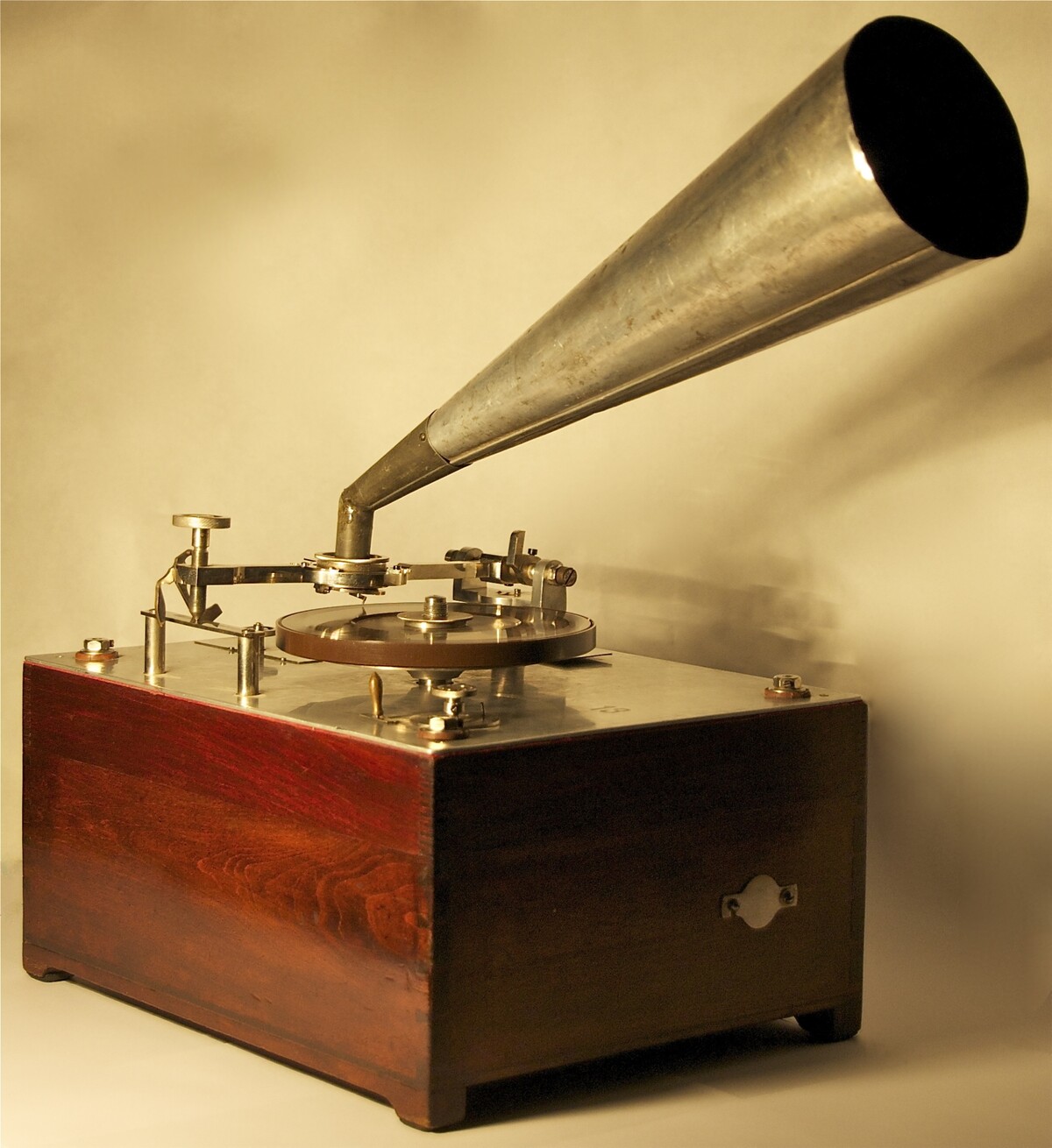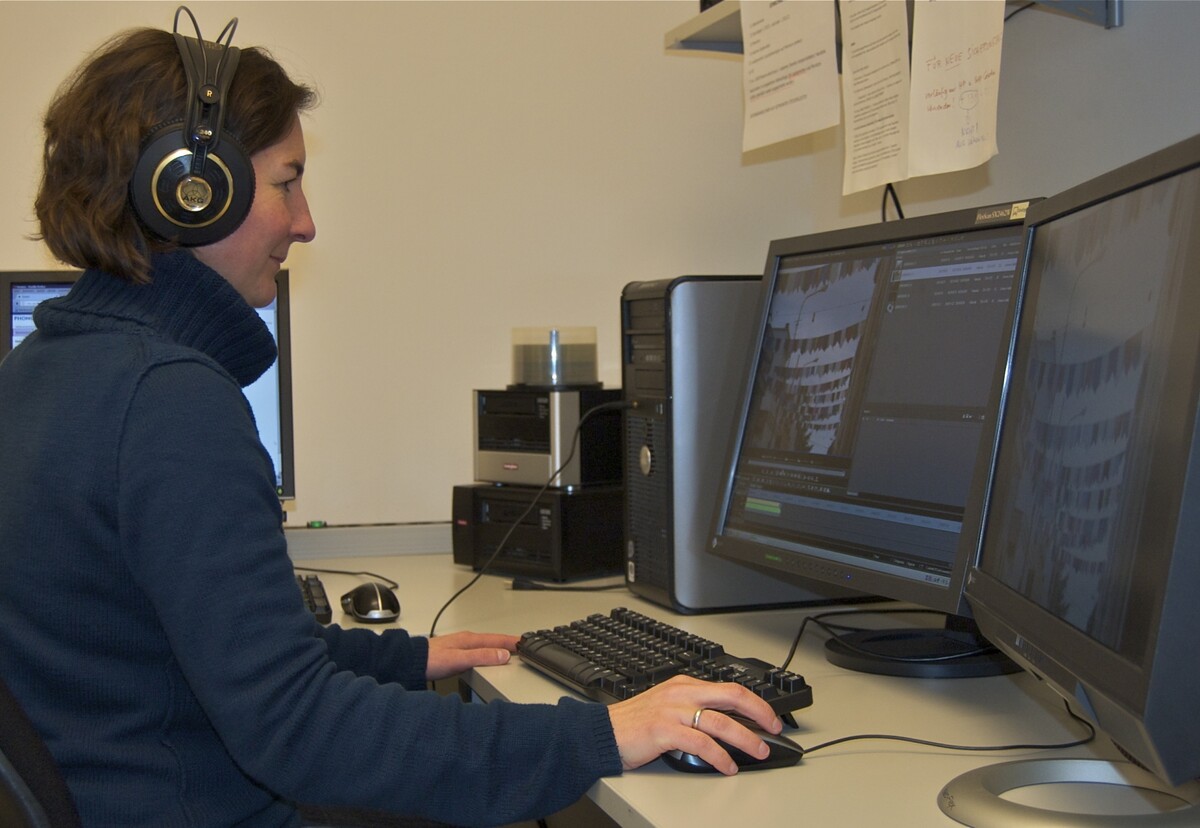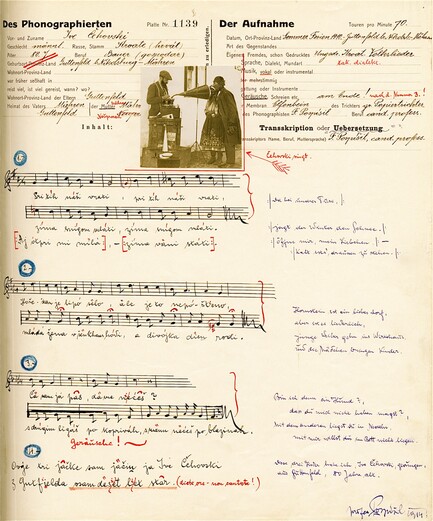When establishing the Phonogrammarchiv in 1899, the then-Imperial Academy of Sciences in Vienna intended to harness the novel technology of sound recording for scientific purposes. Producing and collecting sound recordings should enhance, or make possible, research into languages, dialects and music traditions.
In addition, recording “voice portraits” of prominent persons was seen as significantly complementing any documentation by means of the added acoustic dimension. Already in the Phonogrammarchiv’s earliest period, this agenda was extended to zoological and medical recordings as well as recordings of soundscapes.
However, one was also faced with the problem of the (preferably) lossless duplication and long-term preservation of sound recordings for their later use and availability. The problem was solved by constructing a special Archiv-Phonograph: this apparatus made use of Edison’s recording technique but inscribed wax discs (instead of cylinders), of which metal matrixes were produced by means of a galvanoplastic procedure.
Several different (more light-weight) versions of the Archiv-Phonograph were constructed before the gramophone technique was introduced also in the Phonogrammarchiv in 1927.
In 1951 the Phonogrammarchiv switched to magnetic tape recording, yet portable tape recorders became available for field research only in 1958. In 1985, the Phonogrammarchiv made its first digital recordings, and digital audio recording became fully established with the introduction of R-DAT recorders in 1990. In 2002, the Austrian Academy of Sciences decided to extend the Phonogrammarchiv by a video section that adheres to the guiding principles developed in audio archiving.
From the outset, the Phonogrammarchiv has put a special emphasis on the detailed annotation of technical and content-related descriptive metadata in order to ensure the usability of recordings for further analytical procedures.
The Phonogrammarchiv’s scholarly recording and collecting activities have always been accompanied by publications presenting in-depth accounts of parts of the holdings, or results of the research in the course of which the respective audio or video recordings were made (see Publications).
The Phonogrammarchiv’s scientific orientation and modus operandi have attracted international attention from the earliest stages, and numerous sound archives modelled on the Phonogrammarchiv have since been established. Likewise, the Phonogrammarchiv is frequently consulted in the course of establishing a new audio-visual archive.
The competence in dealing with historical sound carriers, which results from maintaining its own collections, has made the Phonogrammarchiv a renowned specialist institution for playing historical or damaged sound carriers, and in more recent times also for playing video formats that have become obsolete. Consequently, the Phonogrammarchiv was awarded UNESCO’s Jikji Prize, the highest international award in the area of document preservation.
For details on the initial phase and further history of the Phonogrammarchiv see e.g.
Exner, Sigmund (1900): Bericht über die Arbeiten der von der kaiserl. Akademie der Wissenschaften eingesetzten Commission zur Gründung eines Phonogramm-Archives. In: Anzeiger der mathem.-naturwiss. Klasse der kais. Akademie der Wissenschaften in Wien 37, Beilage (= Mitteilungen der Phonogrammarchivs-Kommission; 1)
Hajek, Leo (1928): Das Phonogrammarchiv der Akademie der Wissenschaften in Wien von seiner Gründung bis zur Neueinrichtung im Jahre 1927. Wien (Sitzungsberichte der Phil.-hist. Klasse; 207/3. Mitteilungen der Phonogrammarchivs-Kommission; 58)
Graf, Walter (1964): Aus der Geschichte des Phonogrammarchivs der Österreichischen Akademie der Wissenschaften. In: Bulletin phonographique 6, 9–39
Kowar, Helmut (2017): „Die Anlage einer Art phonographischen Archives“ – mehr als ein Archiv. Ein Überblick über die Geschichte des Phonogrammarchivs der Österreichischen Akademie der Wissenschaften, in: Geistes-, sozial- und kulturwissenschaftlicher Anzeiger, 152. Jg., Heft 1 (= 94. Mitteilungen des Phonogrammarchivs), 5–45


